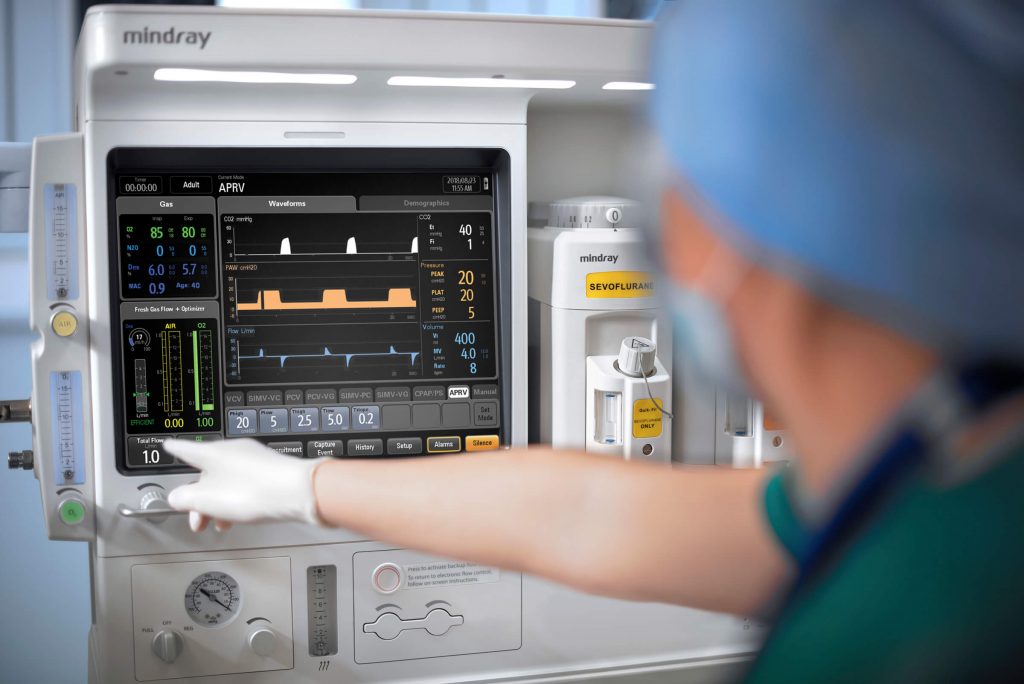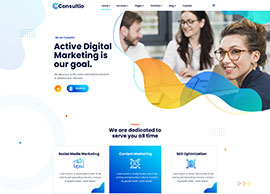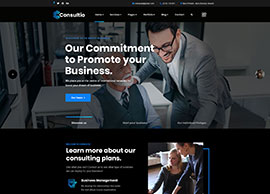We accept Washington & Idaho Patients
Afraid Of The Dentist? You Are Not Alone!
Many people experience dental anxiety. In fact, dental fear is cited as the number one reason why people avoid seeing the dentist. It is estimated that as many as 75% of US adults experience some degree of dental fear, from mild to severe. At the extreme, a person who experiences dental phobia may never see the dentist. Others may force themselves to go, but the visit is clouded in anxiety.
People who are fearful of dental care often fall into a “cycle of avoidance,” in which they avoid care until a dental emergency requiring invasive treatment occurs. This, in turn, reinforces their fear of dentistry. But it doesn’t have to be this way. New treatment options are available for people who experience any level of dental anxiety.

Indications for Dental Anesthesia Include:
- Pediatric Dental Treatments
- Physical or Mental Challenges
- High Anxiety / Low Pain Threshold
- Post Traumatic Stress Disorder
- Full Mouth Dental Treatments
- Prolonged Dental Treatments
- Oral Surgery Procedures
- History of Local Block Failure
- Needle Phobia
- Accentuated Gag Reflex
- History of Local Anesthetic Allergy

FAQS – Pediatric
The anesthesia will be provided by a Dentist Anesthesiologist or Certified Registered Nurse Anesthetist. It is the anesthesia provider’s job to keep your child safe and comfortable during surgery and during recovery from anesthesia. The anesthesia provider never leaves your child’s side until he or she is safe and stable in the recovery area.
Your anesthesia provider takes several factors into account when recommending the type of anesthesia. Some of those factors include the type of surgery, the surgeries expected length as well as your medical history. These types of anesthesia are not always clearly defined, and patients may progress from one level of sedation/anesthesia to a lighter or deeper level during the procedure. For this reason, the American Society of Anesthesiologists (ASA) considers anesthesia a continuum, from light sedation to general anesthesia. Understanding that the level of sedation/anesthesia is a continuum, the ASA has published the following definitions:
Minimal Sedation
A level of sedation that relieves anxiety but preserves consciousness. The patient is typically relaxed but readily responds to verbal commands. Blood pressure, heart rate and respiratory function are generally unaffected.
Moderate Sedation
A level of sedation that depresses consciousness and relieves anxiety and pain. Under moderate sedation, purposeful response to verbal command or light tactile stimulation is maintained. Blood pressure, heart rate, and respiratory function are generally unaffected or minimally affected.
Deep Sedation
A level of sedation in which the patient is not easily aroused, but responds purposefully to repeated or painful stimulation. Blood pressure and heart rate are generally maintained, but intervention may be required to maintain respiratory function.
General Anesthesia
The patient is completely unconscious, and not responsive to painful stimuli. Blood pressure, heart rate and respiratory function are often compromised.
General anesthesia itself is exceptionally safe. Most healthy patients do not have any problems with general anesthesia.
Generally, children are anesthetized by allowing them to breath a little anesthetic gas through a facemask. We add your child’s favorite flavor to the mask and play different distraction games to help ensure your child has a smooth transition to “sleeping” under general anesthesia. After your child is asleep, an IV is usually started. Selection of appropriate anesthetic agents is dependent upon many factors.
Your child’s heart rhythm, blood pressure, the amount of oxygen in your child’s blood, temperature, and level of consciousness will be monitored closely by his or her anesthesia provider.
NPO is a medical abbreviation for “nothing by mouth”. It is very important to adhere to the fasting guidelines established by the American Society of Anesthesiologists. If child’s stomach is not empty, he/she may vomit and aspirate stomach contents into lungs. For this reason, we recommend not consume food after midnight. Your child can have a clear fluid (water, apple juice or jello) three hours prior to procedure start time. Additionally, please avoid breath mints and chewing gum. If the criteria is not followed, your child’s procedure may be postponed or cancelled.
Be sure to ask your doctor which medications your child should take on the day of surgery. Most medications can be continued as scheduled, right up until the morning of surgery and taken with a sip of water. Tylenol (acetaminophen) or Advil (ibuprofen) may be taken for pain. We suggest your child receives his or her usual dose of any inhalers/nebulizers for asthma or reactive airway disease the day of the procedure. Diabetes medications need to be discussed with Apex Sleep Dentistry medical professionals.
Be sure to ask your doctor which medications your child should take on the day of surgery. Most medications can be continued as scheduled, right up until the morning of surgery and taken with a sip of water. Tylenol (acetaminophen) or Advil (ibuprofen) may be taken for pain. We suggest your child receives his or her usual dose of any inhalers/nebulizers for asthma or reactive airway disease the day of the procedure. Diabetes medications need to be discussed with Apex Sleep Dentistry medical professionals.
Short sleeve t-shirts and soft pants are best for all children. Your child may also wear sweatpants, pajamas, or loose fitting 2-piece clothing without “feet” attached.
- An extra change of clothes
- Favorite security object from home (stuffed toy, blanket, pacifier)
- Preferred bottle or cup and/or formula, if applicable
- Diapers (if still wearing diapers)
- Wear loose fitting 2-piece clothing or pajamas- no pajamas with feet attached
- Storage case for glasses, contact lenses, and/or retainers, if appropriate
Your child will be brought to the recovery room. This is where you will rejoin your child as he or she awakens from anesthesia. During recovery, your child’s blood pressure and pulse will be checked periodically. When your child is fully awake, he or she will be discharged home. Most patients are able to go home in approximately 30 minutes after his or her procedure.
- Have plenty of liquids such as Gatorade, apple juice, and popsicles on hand
- Tylenol or prescribed post-op medications
- First meal should be light, e.g., bread or crackers or soup (avoid fast food)
- Avoid active play for at least 6 hours after procedure
- Normal activities can be resumed by the next day with very little residual effects
If there is an urgent matter, please call Apex Sleep Dentistry at (509) 990-6300
If there is an emergency, please call 911
FAQS – Adults
The anesthesia will be provided by a Dentist Anesthesiologist or Certified Registered Nurse Anesthetist. It is the anesthesia provider’s job to keep your child safe and comfortable during surgery and during recovery from anesthesia. The anesthesia provider never leaves your child’s side until he or she is safe and stable in the recovery area.
Your anesthesia provider takes several factors into account when recommending the type of anesthesia. Some of those factors include the type of surgery, the surgeries expected length as well as your medical history. These types of anesthesia are not always clearly defined, and patients may progress from one level of sedation/anesthesia to a lighter or deeper level during the procedure. For this reason, the American Society of Anesthesiologists (ASA) considers anesthesia a continuum, from light sedation to general anesthesia. Understanding that the level of sedation/anesthesia is a continuum, the ASA has published the following definitions:
Minimal Sedation
A level of sedation that relieves anxiety but preserves consciousness. The patient is typically relaxed but readily responds to verbal commands. Blood pressure, heart rate and respiratory function are generally unaffected.
Moderate Sedation
A level of sedation that depresses consciousness and relieves anxiety and pain. Under moderate sedation, purposeful response to verbal command or light tactile stimulation is maintained. Blood pressure, heart rate, and respiratory function are generally unaffected or minimally affected.
Deep Sedation
A level of sedation in which the patient is not easily aroused, but responds purposefully to repeated or painful stimulation. Blood pressure and heart rate are generally maintained, but intervention may be required to maintain respiratory function.
General Anesthesia
The patient is completely unconscious, and not responsive to painful stimuli. Blood pressure, heart rate and respiratory function are often compromised.
General anesthesia itself is exceptionally safe. Most healthy patients do not have any problems with general anesthesia.
Your anesthesia provider will always monitor your heart rhythm, blood pressure, the amount of oxygen in your blood, the carbon dioxide that you exhale, your respiratory rate and temperature. These parameters and general visual appearance are monitored during the entire procedure.
NPO is a medical abbreviation for “nothing by mouth”. It is very important to adhere to the fasting guidelines established by the American Society of Anesthesiologists. If child’s stomach is not empty, he/she may vomit and aspirate stomach contents into lungs. For this reason, we recommend not consume food after midnight. Your child can have a clear fluid (water, apple juice or jello) three hours prior to procedure start time. Additionally, please avoid breath mints and chewing gum. If the criteria is not followed, your child’s procedure may be postponed or cancelled.
With our innovative techniques, recovery is usually very quick. You will awaken and recover until you have met certain criteria for discharge home. Avoid driving, operating machinery, drinking alcohol, and making legal decisions for at least 24 hours.
Most patients begin to feel more alert as soon as the medication is discontinued. Any drowsiness or confusion will quickly dissipate as you emerge from anesthesia. During recovery your blood pressure and pulse oximetry will be checked periodically. Many patients are able to go home 30 minutes after their procedure and can resume all normal activities by the next day with very little residual effects.
It is unusual to wake up with pain. Most anesthetics provide significant relief of postoperative pain and patients are usually very comfortable. If you experience pain, let your provider know.
- Eat a healthy meal to restore your energy and drink plenty of fluids.
- You should be able to return to your everyday activities the next day.
- Avoid driving, operating machinery, drinking alcohol, and making legal decisions for at least 24 hours.
- Follow Apex Sleep Dentistry’s instructions for restrictions and other recovery instructions.
If there is an urgent matter, please call Apex Sleep Dentistry at (509) 990-6300
If there is an emergency, please call 911
Our Anesthesia Service is accredited by AAAHC Our providers are board-certified, licensed, credentialed, and skilled in all types of anesthesia in all ambulatory setting. All patients are monitored with the same standard of care as in the hospital. The anesthesia provider NEVER leaves the patient side. Our equipment is routinely inspected. We carry all necessary emergency medication. Our state-of-the-art monitoring ensures patients are “asleep”, comfortable and safe during the entire procedure. Committed to Patient Safety and Comfort” over the paragraph “Our anesthesia service is accredited….






































